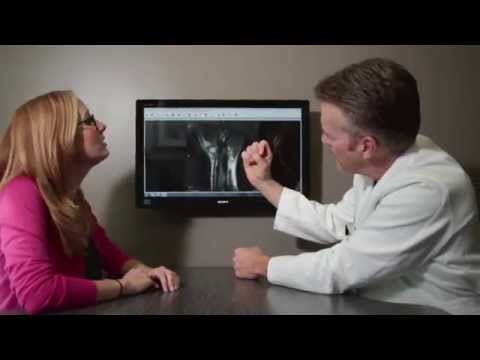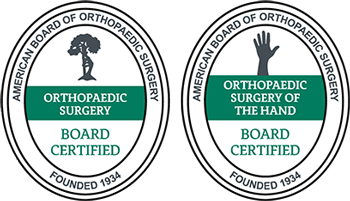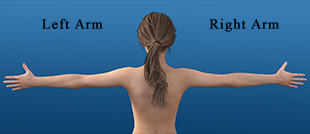Triceps Tendonitis
Triceps tendonitis is sometimes misdiagnosed in the early stages. It’s most common among athletes or workers who regularly perform repetitive arm movements. If you’re experiencing elbow or upper arm pain, triceps tendonitis may be the culprit. Getting a professional diagnosis as soon as possible is essential to treat this condition properly. Learn more about triceps tendonitis and how to recognize it so you can get the help you need if you suspect this type of injury.
Contents
What is Triceps Tendonitis?
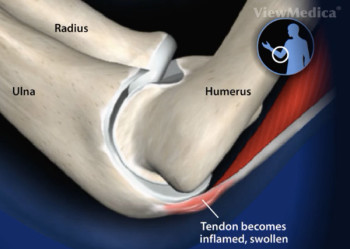
Triceps tendonitis is inflammation of the triceps tendon. The triceps tendon is a strong connective tissue that runs from the shoulder joint along the back of the arm to the elbow, connecting the triceps muscle to the bone. Tendonitis occurs when the tendon becomes injured or inflamed.
What Causes Triceps Tendonitis?
Overuse is the most common cause of triceps tendonitis. When you exercise, you create micro-tears in your muscles. These tiny tears will heal naturally when they get enough rest. If you don’t give your body enough time to repair, you may worsen the muscle tears and strain the triceps tendon.
Triceps tendonitis can also result from repetitive triceps movements. Actions that can lead to this type of injury include the following:
- Swinging a hammer
- Swinging a tennis racket
- Throwing a baseball
- Shoveling
- Push-ups
- Bench press exercises
- Off-road mountain biking
- Motorcycle jumping
- Swimming
In some cases, triceps tendonitis can result from an injury. If your triceps tendon sustains an extreme impact, it may become inflamed.
Triceps injuries are more common in men than women. They can occur in individuals with reduced strength and flexibility, even with minor lifting. Metabolic syndromes, endocrine disorders, and diabetes increase the risk of a triceps injury. Triceps tendonitis is uncommon in children.
Triceps Tendonitis Symptoms
Symptoms of triceps tendonitis are like those of other arm injuries, such as a bone fracture, torn tendon, or osteoarthritis. Speaking with a doctor about these symptoms is important to get an accurate diagnosis and treatment plan. Triceps tendonitis symptoms include the following:
- Pain in the elbow, shoulder, or triceps muscle
- Weakness of the triceps muscle with activities that require extending the arm
- Swelling around the elbow
- Redness at the elbow
These symptoms worsen with continued use of the triceps muscle. In severe cases, you may experience pain even when the arm is at rest. You should seek medical treatment immediately if the pain is so severe you can’t get relief.
Diagnosis
If you’re presenting with symptoms of triceps tendonitis, your doctor will begin with a physical examination of the arm. They may also test your range of motion by having you move or rotate your shoulder and elbow. Your doctor may gently press the elbow to determine the source of your pain accurately.
If your doctor suspects triceps tendonitis, imaging tests, such as an X-ray, ultrasound, CT, or MRI scan, may be necessary to provide more detailed information about the nature and extent of the injury. Imaging can help rule out other possible causes of your pain. Imaging tests are also necessary if your doctor suspects a possible fracture, as this is the only way to determine if you’ve injured the bone.
Treatment Options for Triceps Tendonitis
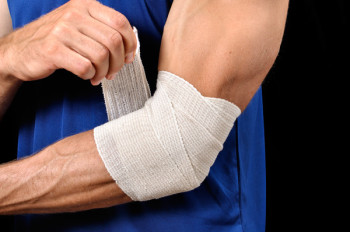
Most cases of triceps tendonitis are treated without surgery. However, surgical options are available for extreme or persistent injuries.
Nonsurgical Treatment
The RICE (Rest, Ice, Compression, Elevation) method is very effective for minor cases of triceps tendonitis. You should refrain from any movements that aggravate the injury. Applying ice to the elbow for 20 minutes can help reduce swelling and pain. Using a compression bandage may also provide some pain relief. When possible, elevate the elbow above the heart to reduce swelling.
You should follow the RICE protocol for at least two days. After that time, your doctor may recommend a gradual return to everyday movements. Special exercises can help strengthen and restore the triceps tendon. Following any physical therapy program, your doctor recommends is essential to recover fully. Without the appropriate physical therapy, triceps tendonitis is likely to recur.
Over-the-counter anti-inflammatories such as naproxen, aspirin, and ibuprofen reduce swelling and discomfort associated with triceps tendonitis. Corticosteroid injections can provide relief for a more severe injury. These injections are inappropriate for longer than 90 days, as they can weaken the muscle.
Surgical Treatment
If a partial or complete tendon tear accompanies your tendonitis, you may need surgery to repair the injury. In cases where nonsurgical treatments are ineffective after six months, your doctor may elect to proceed with a surgical remedy. Surgery usually involves reattaching the tendon to the bone. This procedure takes place under general anesthesia. The surgeon makes a small incision to expose the tendon and uses sutures or bone anchors to secure the tendon.
Your surgeon may use a graft if the tendon can’t be reattached to the bone. This procedure involves taking a piece of tendon from another part of the body and using it to support and repair the injured tendon.
After surgery, you’ll need to wear a brace or splint for about two weeks before progressively returning to normal movements. You should be able to return to normal activity three to six months after surgery.
Contact Dr. Knight at The Hand and Wrist Institute
Contact Dr. Knight at The Hand and Wrist Institute if you have elbow or arm pain. We have over 25 years of experience serving patients throughout the Dallas-Fort Worth area. We’re industry leaders in treating arm, joint, and hand injuries effectively. Contact us to make your appointment and get expert treatment for your injury.
Triceps Tendonitis Fact Sheet
| Are there any medications I can take to treat tendinitis? | Tendinitis is typified by microtears in the tendon, and so it not an inflammatory condition, otherwise NSAIDs would be effective in reducing some of the swelling and discomfort. If any thing, painkillers might be necessary to treat more serious cases of the condition due to the pain of the injury to the tendon |
| How does conservative treatment of tendinitis look? | Tendinitis is generally treated by utilizing the RICE protocol. Rest, Ice, Compression, and Elevation are the four most important aspects of this protocol, and if followed carefully and assiduously, can almost guarantee a positive result in alleviating the symptoms of tendinitis, whether in the triceps or other parts of the arm. |
| How can I avoid developing tendinitis? | The most important part of any athletic activity is the warmup, and this isn't just an old wives' tale; if proper exercises are undertaken prior to strenuous activity, then the micro-tears that lead to tendinitis can be avoided, as can the pain and discomfort associated with it. |
Frequently Asked Questions:
What can I do at home to help reduce the pain or discomfort of triceps tendinitis?
Triceps tendon injuries can be alleviated by exercises that fall under the same general category as exercises designed to strengthen the triceps muscle, so resistance presses, push-ups, and kick-backs can all be effective in strengthening the triceps tendon and lowering the incidence of damage and pain. Obviously, if these exercises are not done properly or the muscle and tendon are still overused, then they will not be helpful and the damage that leads to the condition will still be done.
What is the recovery time from triceps tendinitis?
Recovery time for triceps tendinitis varies depending on the severity of the condition and the method used to treat it. Conservative treatment of the illness may stretch on for a long time, possibly as long as you remain active, so as to stave off the worsening of symptoms already present. Corticosteroid injection may be briefly effective, but the condition will eventually progress over time. Surgical intervention will usually consist of repair, as it is only indicated if the tendon itself ruptures, which is a much more serious iteration of the condition than the discomfort of its earlier stages.
Can tendinitis go away on its own?
Tendinitis can seem to go away over time, and its symptoms may wane, but in reality, tendinitis quietly evolves into tendonosis, which is a much more serious condition typified by the breakdown of the tissue, a far more dangerous issue than simple tears in the tendon. Leaving tendinitis to heal itself is not recommended, and medical intervention is the best and most effective way to remedy the situation.
Animated Videos
Disclaimer
HandAndWristInstitute.com does not offer medical advice. The information presented here is offered for informational purposes only. Read Disclaimer



